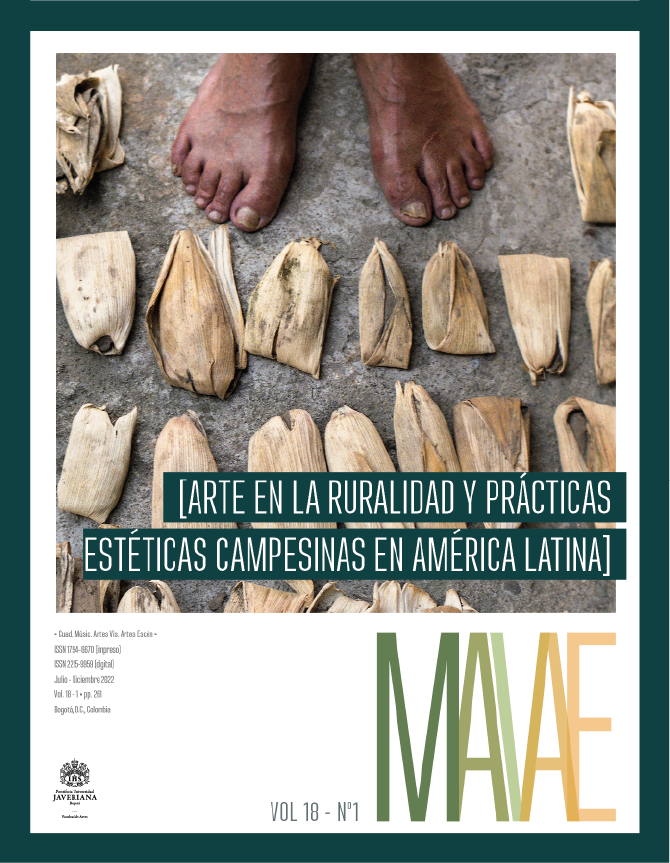Abstract
The article analyzes and compares written records that Afro-descendant peasant teachers, especially from Cauca, make in the process of teaching grima or fencing with machete and a walking stick. On the one hand, paper records that are traditionally used in this practice and that grant the holder recognition as a master of the art. On the other hand, annotations on the ground used by master Ananías Caniquí as part of his training method. Considered in their aesthetic, technical, historical and philosophical value, these records account for sharp codifications of body movements, forms of attack and defense, as well as the complexity of the process of transmission of the grima and the strict ethical agreements between teacher and student. This work is based on ethnographic work accompanying training and dissemination work in several communities of Cauca, as well as on a study of several documents available on the subject.
This journal is registered under a Creative Commons Attribution 4.0 International Public License. Thus, this work may be reproduced, distributed, and publicly shared in digital format, as long as the names of the authors and Pontificia Universidad Javeriana are acknowledged. Others are allowed to quote, adapt, transform, auto-archive, republish, and create based on this material, for any purpose, provided the authorship is duly acknowledged, a link to the original work is provided, and it is specified if changes have been made. Pontificia Universidad Javeriana does not hold the rights of published works and the authors are solely responsible for the contents of their works; they keep the moral, intellectual, privacy, and publicity rights.
Approving the intervention of the work (review, copy-editing, translation, layout) and the following outreach, are granted through an use license and not through an assignment of rights. This means the journal and Pontificia Universidad Javeriana cannot be held responsible for any ethical malpractice by the authors. As a consequence of the protection granted by the use license, the journal is able to publish retractions or to correct information already published. Publishing contents in this journal does not generate royalties for contributors.


